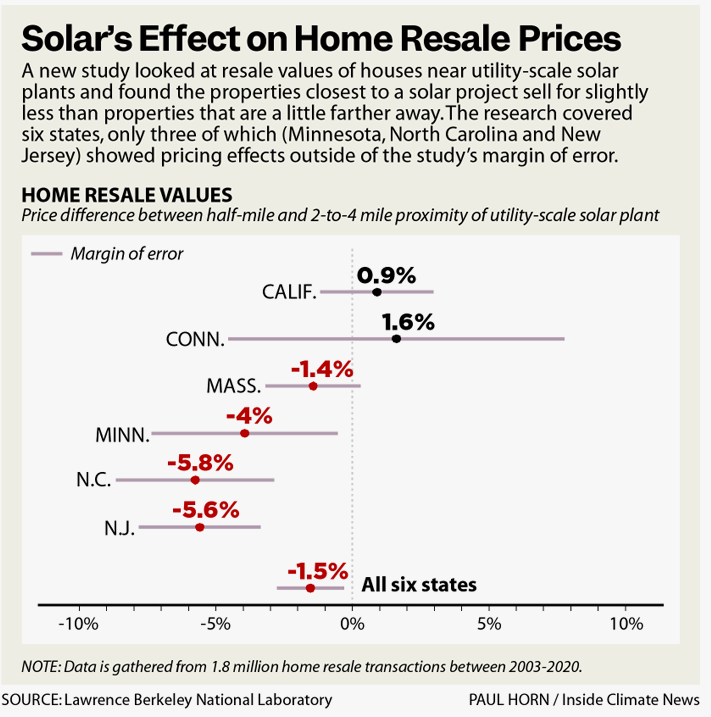Study finds Minnesota solar facilities reduce neighboring property values
A recent study by the Lawrence Berkeley National Labs (LBNL), which was published in the academic journal Energy Policy, has concluded that large solar facilities in Minnesota reduce the resale value of neighboring homes by about four percent, with the largest declines seen in homes within half a mile of the installation.
The study looked at a total of six states and found negative property value impacts in Massachusetts, Minnesota, North Carolina, and New Jersey and positive impacts in California and Connecticut, as you can see in the graphic below created by Inside Climate News.

The study quantified a common concern that residents in rural America have about new solar installations moving in next door.
This is one reason the Minnesota Towns Association has asked me for information on the best ways to mitigate the impact that solar installations may have on neighboring properties, such as having adequate setbacks, vegetative screening or fences, and property value guarantees for nearby property owners.
Potential land use conflicts will only grow in number thanks to the passage of the Blackout Bill, which will require 100 percent of Minnesota’s electricity to come from carbon-free electricity sources by 2040. American Experiment’s research suggests Minnesota will need a 15-fold increase in installed solar capacity in order to meet these mandates, which you can see in the graph below.

These solar facilities will require 123,000 acres of land, which will mean a huge increase in the number of neighbors who will likely experience diminished property values, per the LBNL report.